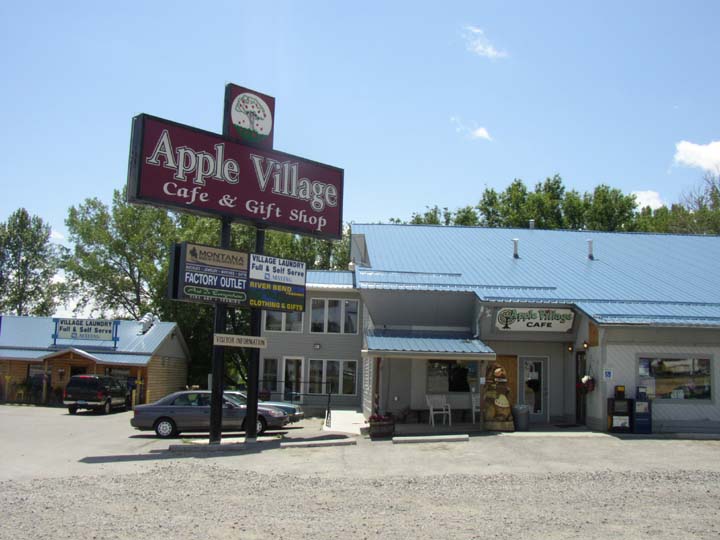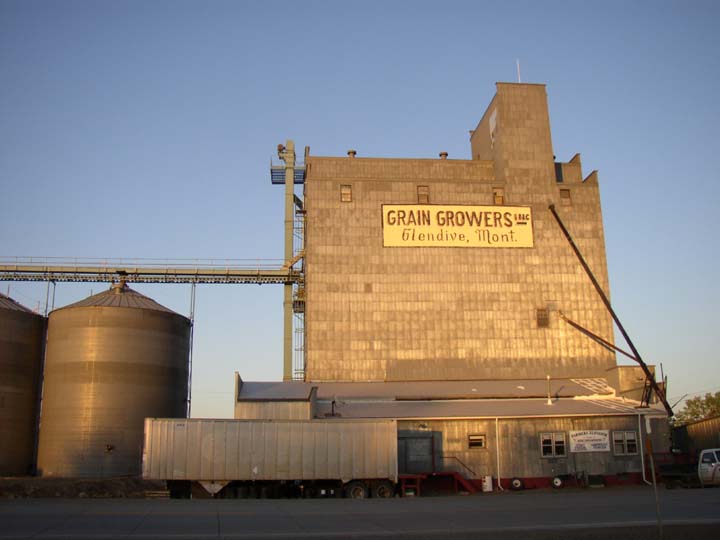Like Friday, we left the museum shop about an hour behind schedule at 11:15 AM. Our drive was across Montana on I-90 and I-94 to Glendive.
We ate lunch in Columbus, Montana at the Apple Village. Dick had a barbecue buffalo sandwich; Thomas had pasta. For dessert, Dick had apple pie with nuts and caramel and vanilla ice cream - if it had been any better it would have had to have been evil.






